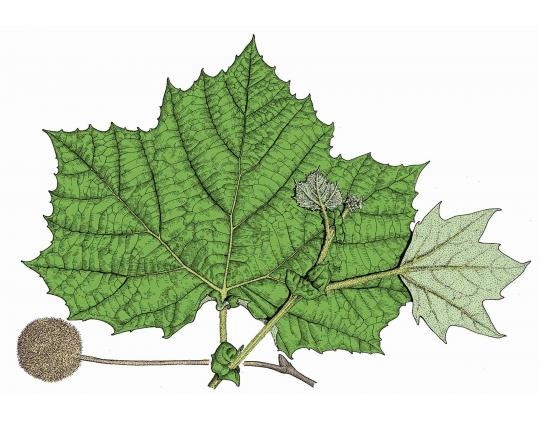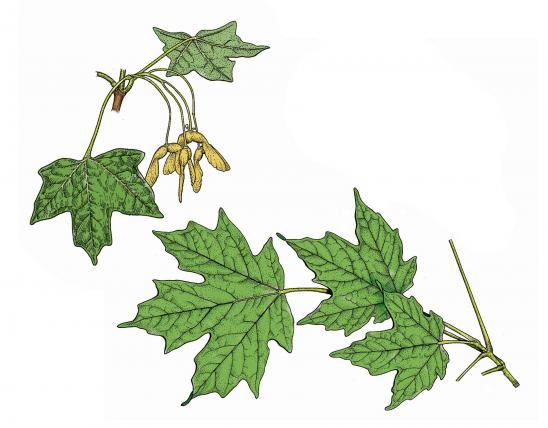
Tulip tree is a large, stately tree with a long, clear trunk and a pyramidal crown.
Leaves are alternate, simple, 4–6 inches long and broad, tip notched or V-shaped at the center, with 2 lobes near the tip and 2 or 4 lobes on the lower sides; margin entire, lobes pointed; leaves turn clear yellow in autumn.
Bark is gray at first, thin, tight, later gray to brown with rounded ridges and long, deep grooves.
Twigs are stout, brittle, greenish- to reddish-brown, sometimes with a whitish coating, aromatic, bitter; pores pale; end bud flattened, resembling a duck’s bill, ½ inch long.
Flowers May–June; large, showy, greenish-yellow, orange-banded at the base, waxy, tulip-shaped, 3–4 inches across, with 6 upright petals; stamens numerous, long.
Fruit matures September–October; brown, woody, conelike, longer than broad, tapering to a point, 2–3 inches long; seeds numerous, winged, light brown, about 1½ inches long.
Height: to over 100 feet; spread: to 40 feet; trunk diameter: to 6 feet.

Occurs naturally in southeastern Missouri, but widely planted statewide.
Habitat and Conservation
At Crowley’s Ridge, occurs in moist woods of ravines, in upland woods, and along streams. Along the Mississippi River in southeastern Missouri, occurs at the base of wooded bluffs. An important ornamental tree for lawns, parks, and cemeteries. One of the most attractive and tallest of eastern hardwoods. Fast-growing. In cove forests in the Appalachians, it can reach 300 years old.
Status
One of our most valuable trees. Tulip tree is in the magnolia family, but early lumbermen called it "poplar" because its wood is lightweight, like that of poplars and birches (which are in different families). In cultivation, this tree grows rapidly in good soil, has excellent form, and is disease resistant. It will not grow in the shade.
Human Connections
One of our most valuable trees: for landscaping as an attractive shade tree, for wood products, for historical medicinal usage, and more.
- An important and very popular landscaping tree. In cultivation, it grows rapidly in good soil, has excellent form, and is disease resistant. It will not grow in the shade.
- The wood is used for veneer, plywood, crates, furniture, cabinets, musical instruments, and more.
- Native Americans used bark tea as a remedy for numerous ailments. An alkaloid extract from the bark was once used as a heart stimulant.
Tulip tree is in the magnolia family, but early lumbermen called it "poplar" because its wood is lightweight, like that of poplars and birches (which are in different families).
Ecosystem Connections
The seeds are eaten by at least 10 species of birds, as well as by squirrels and other small rodents.
The leaves are eaten by deer and rabbits.
It is a favorite nesting tree of many birds.
A considerable amount of nectar is produced and harvested by bees.














































